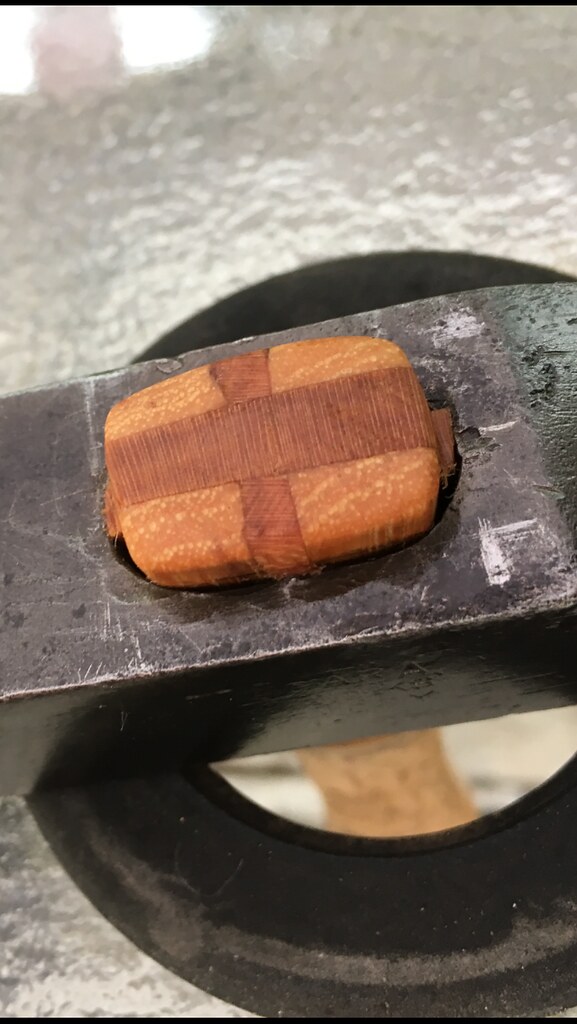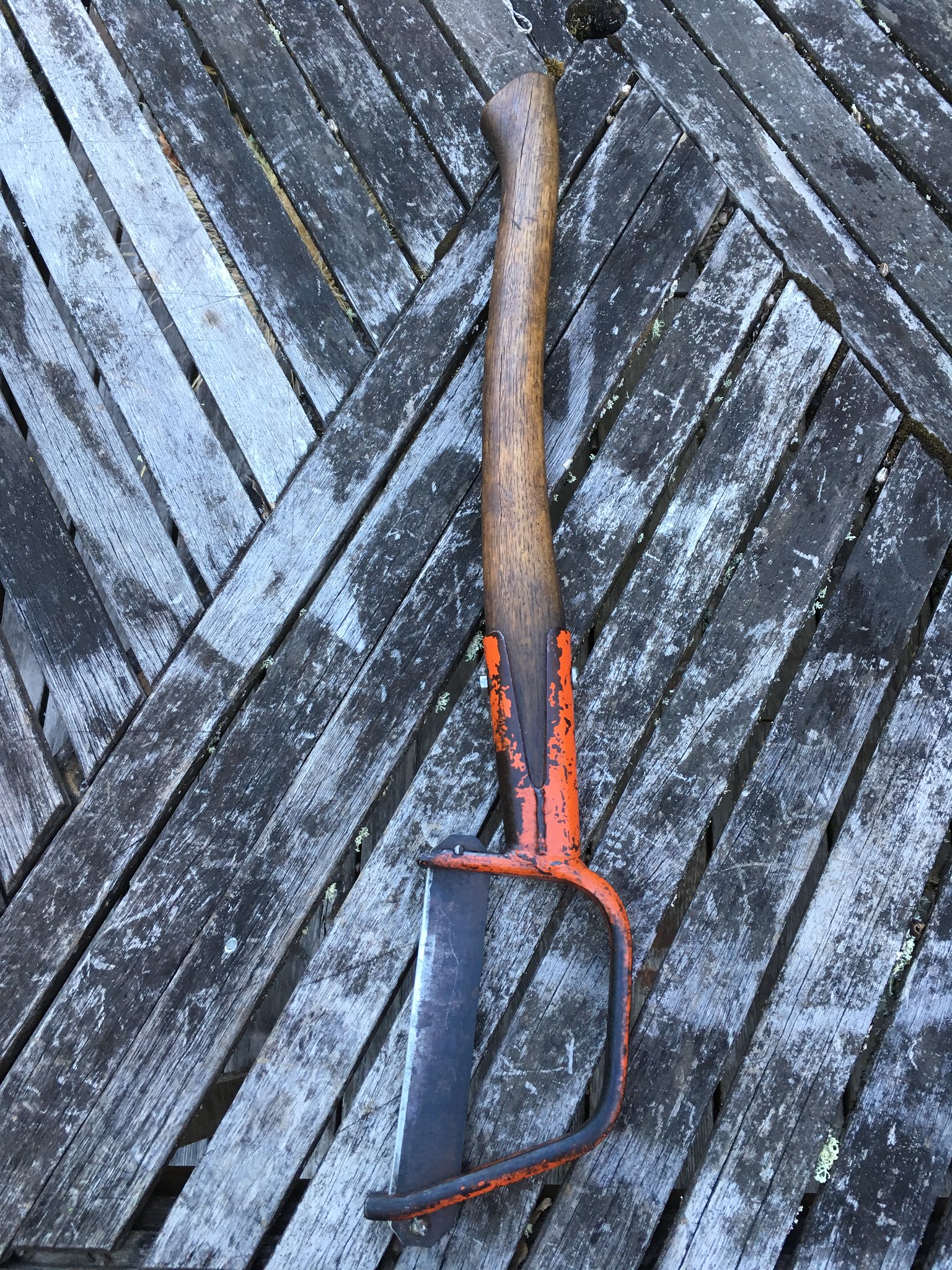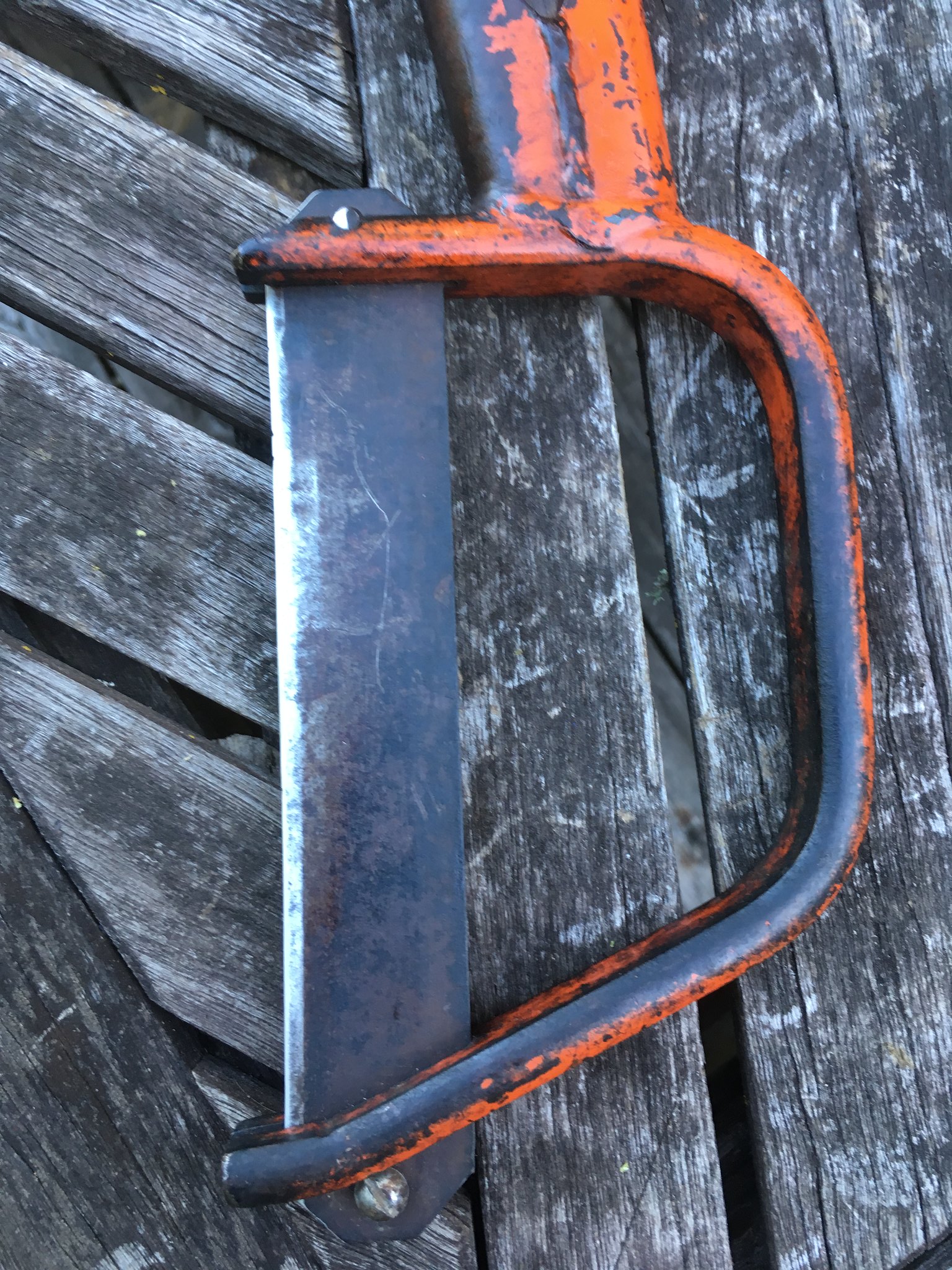Now I know this won't go down well with many but when it comes to hammers, especially smaller hammers I believe steel wedges are by far a better permanent fix as apposed to only wooden wedges, even if cross wedged, wood as well as steel is needed.
This is not the same for larger eyes like axes, that's a different matter with bigger areas.
Obviously the shaft needs to be a tight fit to begin with, but in a smaller hammer head it might only need half an inch of handle wood to be "compressed" or "spread" on the outer end of the "hourglass" shape of the eye, anything much past half way into the eye isn't needed or desirable, also a higher pressure can be exerted on the wood with a steel wedge. A decent steel barbed wedge in my opinion cannot be beaten for this.
Of the scores of old hammers I've collected when a larger eye has originally been cross wedged with wood & steel it's usually half or even all of the wooden wedge that's missing, sometimes then sadly bodged with nails & screws.
I know many complain steel barbed wedges are often hard to remove without destroying the handle, the simple fact is a hammer handle hung correctly with a steel wedge will only need a new handle when it's beyond salvation anyway so that really doesn't matter, what matters is it NOT coming out.
A correctly hung steel wedged handle can be tightened back up easily after years of use or in an area with big humidity shifts by tapping the handle (usually on a hard surface, shaft down) & re-seating the wedge a bit deeper usually using a punch then dress a little wood away as necessary, obviously this is dependent on a good shaped eye & handle fit in the first place.
Off topic slightly, there a pictures floating about of poorly fitted handles where wooden wedges are used to take up "slack", a handle should be "tap it home" tight before wedging, soft hammer useful here.
I have a panel hammer I steel wedged in 1988, now I don't abuse my tools but that hammer has seen lots of use with as far as I can remember nothing more than an oiling (whatever was around) once in a blue moon, still tight.
This is my opinion, as others rightly point out it is important for newbies reading looking for advice, it serves to balance out others opinions, which are just that, opinions not fact.






 Safety Dance
Safety Dance Safety Dance
Safety Dance

